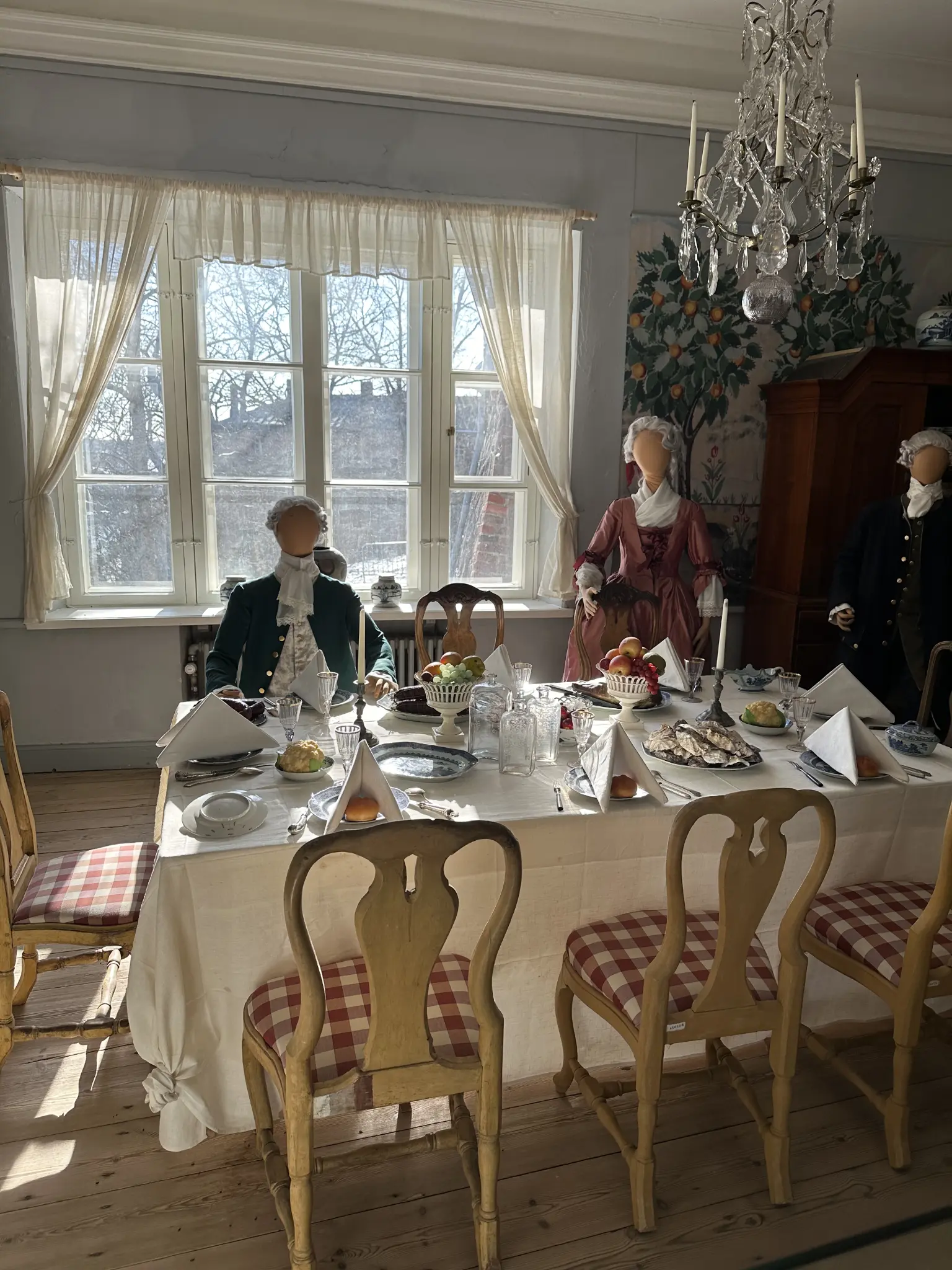
Room 7. Dining room

Room 7. Dining room
Dining halls became more common in the 18th century, and festive meals were served either in the hall or in a separate dining room. The dining hall is decorated with popular forest-themed wallpaper, the design of which was based on woven wallpapers from the Baroque period. The wallpapers reflect the era’s fondness for romanticized nature, but also its interest in gardening. In Finland, manor houses of the gentry began to feature fruit trees in particular: apple, plum, damson, cherry, and even pear.
Drinking glasses and beverages were placed on a side table, from which a servant would bring drinks and rinse glasses in a rinsing bowl for the next round. Not everyone had their own glass, so drinks were consumed in turn. Available beverages included water, schnapps, wines, punch, and bishop. There was also sugar on the side table for those who preferred sweeter wine.
At the gentry’s banquet tables, exotic and expensive foods were served, such as lemons, spiced dishes, and costly wines. Festive dinners could last all night, with multiple courses. Between them, guests danced and played cards. Lavish servings and expensive tableware displayed social hierarchy, in other words, belonging to a certain class.

